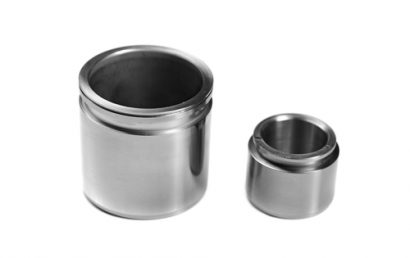How Can Food Packaging Machines Benefit From Release Coatings?
High-volume, fast-paced production facilities simply cannot incur the costs that downtime generates. Packaging equipment, when performing poorly, is one guilty party that costs production companies in the food and beverage industry millions of dollars. Release coatings for food packaging machines can help keep the business up and running.
Packaging machine surfaces can be harmed by any number of conditions which, in turn, detract from the machine’s performance. These can include buildup, wear, friction, and release problems caused by substances that are particularly sticky. Issues involving sanitation can arise as well. Where your packaging operation is concerned, to achieve maximum uptime, you must select the best equipment protection method available.
Let’s look at some common packaging problems and the challenges most typical to them. To address each of these, there are surface enhancement coatings that can be used. Note: These coatings may go by various trademarks and brand names.
Sticking and Buildup
Inks, packing films, glues, adhesives, and residue from products can clog the surface of packaging equipment. This can cause necessary maintenance measures which, in turn, cause shutdowns. There are several coatings that can help. Here’s what specific coatings can do:
- For both inks and glues, permit easy and quick cleanup.
- Formulated to provide excellent release from materials such as pressure sensitive adhesives, hot melt glues, etc.
- Offers easy cleanup and excellent mold release without needing to use bleaches or caustic chemicals.
- Suited for adhesive buildup prevention on packaging equipment. As soon as they dry, materials that are unwanted simply fall off.
Sealing Equipment – Stick Release
Precise coatings offer the following:
- To prevent adhesive buildup, permanent nonstick dry lubricity is provided. This offers excellent wear resistance on components such as heat-sealing bars.
- Better wear resistance, durability, and release properties are offered by coatings that are thermally conductive.
Abrasive Wear and Friction
Other machine parts can be impacted by movable parts of equipment. Example: Slow operation speeds and friction can be caused by the bottoms and sides of chutes being scraped by aluminum arms. Additionally, aluminum and steel components can potentially be worn out on high-volume strapping machines. Precise brand-name coatings provide the following:
- Offer a low friction coefficient and provide an ultra-hard surface.
- To prevent abrasive wear, permanently lubricate stainless steel components.
- To eliminate premature wear, create friction protection for aluminum parts. This also provides non-peeling attributes and super hard surfaces.
- In applications like carousels and chutes, resolve friction and wear problems.
Overwrap and Film Challenges
Specific brands of coatings can do the following:
- To prevent glues from sticking to base metals, offer excellent lubricity.
- For trouble-free, attractive packages, aluminum parts can be fortified with corrosion resistant, ultra-hard, nonstick surfaces.
- Providing an exceptionally low COF, impart a micro finish that is ultra-hard and cannot rub off, peel, or flake.
In the Cleanup Department
Ask about brands that offer the following:
- Make cleaning easier with coatings to which very few substances (solid types) adhere.
- Help eliminate mold growth potential by creating a nonporous surface.
The Food and Beverage Industry Relies on A&A Coatings
At A&A Coatings, we specialize in every kind of existing thermal spray coating being used in industries throughout the world today. That does, of course, include release coatings for the food industry. If you deal with food and beverages, or the packaging of them, your best bet is to contact one of our representatives today. We can advise you as to how our coatings can benefit your company.



